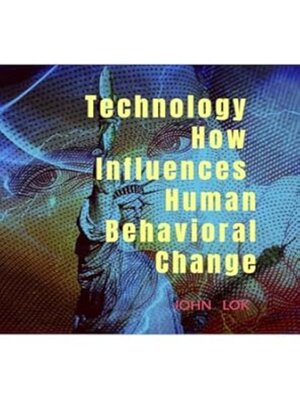
Sign up to save your library
With an OverDrive account, you can save your favorite libraries for at-a-glance information about availability. Find out more about OverDrive accounts.
Find this title in Libby, the library reading app by OverDrive.



Search for a digital library with this title
Title found at these libraries:
| Library Name | Distance |
|---|---|
| Loading... |
Introduction
The influence of technology on human behavior is a multifaceted topic that encompasses various aspects of daily life, social interactions, mental health, and overall well-being. Research by authors like John Lok has explored how technology can lead to both positive and negative changes in human behavior. This analysis will break down the mechanisms through which technology influences behavior, supported by recent findings.
Positive Influences of Technology on Human Behavior
1. Enhanced Communication
Technology has revolutionized communication methods. Social media platforms, messaging apps, and video conferencing tools have made it easier for individuals to connect with others regardless of geographical barriers. This enhanced connectivity can lead to:
Stronger Relationships: People can maintain relationships over long distances.
Support Networks: Online communities provide emotional support and shared experiences.
2. Access to Information
The internet provides vast amounts of information at our fingertips. This accessibility can lead to:
Informed Decision-Making: Individuals can research health, education, and lifestyle choices more effectively.
Lifelong Learning: Online courses and educational resources encourage continuous personal development.
3. Health Monitoring and Improvement
Wearable technologies and health apps allow individuals to monitor their physical activity, diet, and mental health. This leads to:
Behavioral Changes: Users may become more active or mindful about their health due to real-time feedback.
Preventive Care: Early detection of health issues through monitoring can lead to better outcomes.
Negative Influences of Technology on Human Behavior
1. Decreased Face-to-Face Interaction
While technology facilitates communication, it can also reduce face-to-face interactions. This shift may result in:
Social Isolation: Individuals may feel lonely despite being connected online.
Reduced Empathy: Lack of in-person interaction can diminish emotional understanding between people.
2. Addiction and Distraction
The design of many digital platforms encourages addictive behaviors through notifications and endless scrolling. This can lead to:
Decreased Productivity: Constant distractions from devices can hinder focus on tasks.
Mental Health Issues: Overuse of technology is linked to anxiety, depression, and stress.
3. Misinformation Spread
The rapid dissemination of information online includes the spread of misinformation. This phenomenon affects behavior by:
Polarizing Opinions: Exposure to biased information can reinforce existing beliefs rather than promote critical thinking.
Public Health Risks: Misinformation regarding health (e.g., vaccines) can lead to harmful behaviors.
Conclusion
In summary, technology significantly influences human behavioral change in both positive and negative ways. While it enhances communication, access to information, and health monitoring, it also poses risks such as decreased face-to-face interaction, addiction, distraction, and the spread of misinformation. Understanding these dynamics is crucial for leveraging technology effectively while mitigating its adverse effects.







